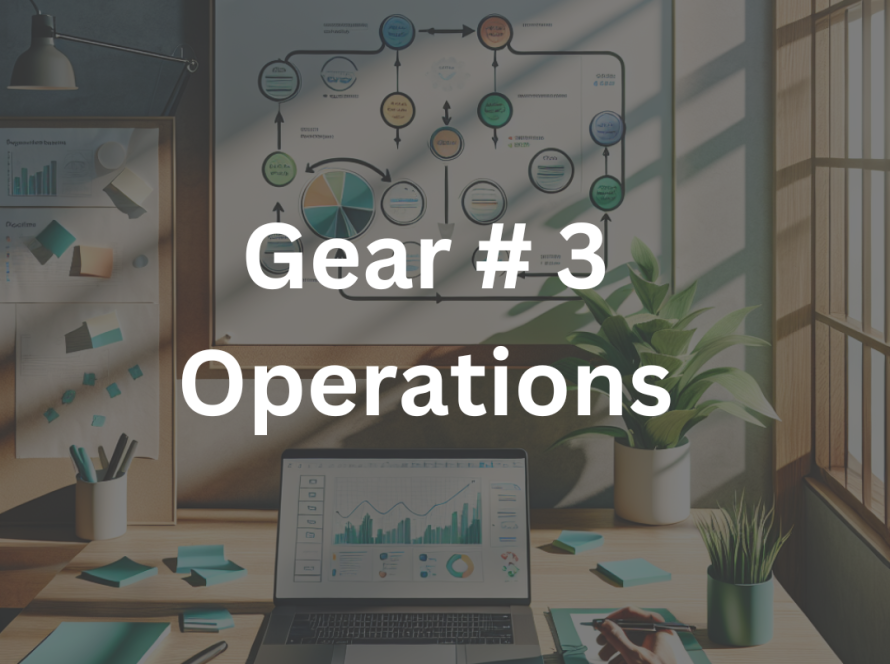Ever wonder how successful businesses stay on track and keep growing? It’s like having a secret sauce, and in the business world, it is called Key Performance Indicators or KPIs. Now, don’t let the jargon scare you off.
In simple terms, KPIs are like signposts telling a business how well it’s doing. It’s the GPS for businesses, and we’re here to decode it all for you. Imagine you’re helping new clients get their business groove on, but they’re a bit puzzled. “Why bother with KPIs? Is our way of doing things really that off?”
It happens a lot. They throw questions like “Why do we need KPIs?” or “What’s the big deal with KPIs?” or just plain “What are KPIs?” It’s like convincing someone to try a new dish when they’re used to their old cooking routine.
But here’s the deal: Effective KPIs are like the superheroes of business. They make sure your business not only survives but rocks it. In this blog about KPIs, we’ll explain what are KPIs,why they matter so much, the diverse types that exist, and why they are indispensable for your business trajectory.
What are KPIs?
Key Performance Indicators (KPIs) are measurable metrics that provide a tangible representation of health, performance, and overall business success. KPIs are not a one-size-fits-all solution; rather, they are tailored to align with specific goals, strategies, and the unique nuances of each industry.
KPIs demonstrate how effectively a company is achieving key business objectives. They tell you specific and quantifiable insights into the performance and progress of an organization in areas crucial to its success. These metrics serve as a compass, guiding decision-making processes and enabling businesses to track and assess their performance over time.
Benefits of Tracking KPIs
Early Problem Detection
One of the primary benefits of KPI tracking is the ability to identify issues early on. Whether it’s a sudden dip in sales, a drop in customer satisfaction, or a decline in employee performance, early detection enables timely intervention, preventing minor hiccups from turning into major setbacks.
Measuring Progress
KPIs serve as checkpoints on your journey towards organizational goals. Regularly tracking and analyzing these indicators ensures that you stay on course and make necessary adjustments to reach your destination. It’s not just about setting goals; it’s about achieving them.
Accountability
Transparently sharing KPI data fosters a sense of accountability among team members. When employees can see the impact of their efforts on key metrics, it not only holds them accountable but also serves as a motivational tool.
Data-Driven Decisions
Tracking KPIs instills a data-driven culture within an organization. Instead of relying on gut feelings or intuition, decisions are backed by concrete data, reducing uncertainty and increasing the likelihood of successful outcomes.
Continuous Improvement
KPIs are not just about measuring performance; they are about continuous improvement. By regularly assessing KPI data, organizations can identify areas for enhancement, implement changes, and evolve to meet the ever-changing demands of the market.
Types of KPIs
Financial KPIs
- Revenue Growth: A classic indicator of financial health, tracking revenue growth over time highlights the effectiveness of sales and marketing efforts.
- Profit Margins: Understanding profit margins is crucial for assessing the profitability of products or services and optimizing pricing strategies.
- Return on Investment (ROI): This KPI measures the return generated on investments, guiding decision-making on resource allocation.
Customer Service KPIs
- Customer Satisfaction (CSAT): A metric reflecting customer contentment, CSAT surveys provide valuable feedback on the quality of products and services.
- Net Promoter Score (NPS): NPS gauges customer loyalty and likelihood to recommend a business, providing insights into brand advocacy.
- First Response Time: An essential metric for customer support, tracking the time it takes to respond to customer inquiries ensures prompt and efficient service.
Operational KPIs
- Productivity: Measuring productivity helps optimize workflows and resource allocation, ensuring efficient use of time and resources.
- Inventory Turnover: For businesses dealing with physical goods, monitoring inventory turnover is crucial for managing stock levels and preventing overstock or stockouts.
- Project Completion Time: This KPI ensures projects are completed within the specified timeframe, helping in timely delivery and resource planning.
Marketing KPIs
- Conversion Rate: Tracking the percentage of website visitors who take a desired action, such as making a purchase, provides insights into the effectiveness of marketing campaigns.
- Cost Per Acquisition (CPA): CPA calculates the cost of acquiring a new customer, helping businesses optimize their marketing budget.
- Website Traffic: Monitoring website traffic provides insights into the success of online marketing efforts and the overall health of digital presence.
Employee Performance KPIs
- Employee Turnover Rate: This KPI measures the percentage of employees leaving a company within a given period, providing insights into employee satisfaction and organizational health.
- Average Tenure: Tracking the average length of time employees stay with the company helps assess employee loyalty and the effectiveness of talent retention strategies.
- Training and Development Metrics: These metrics gauge the effectiveness of training programs and the continuous development of employees, contributing to overall organizational growth.
How to Monitor KPIs?
Choose Relevant KPIs
Selecting the right KPIs is a critical first step. It’s not about drowning in data but rather focusing on the indicators that truly matter for your organization’s success. For instance, if you’re in e-commerce, monitoring conversion rates and customer acquisition costs might be more relevant than, say, inventory turnover.
Utilize Technology
In the age of digital transformation, leveraging technology is essential for efficient KPI monitoring. Numerous analytics tools and software solutions are available to automate data collection, generate insightful reports, and provide real-time dashboards for quick decision-making.
Regularly Review and Adjust
The business landscape is dynamic, and so should be your KPIs. Regularly review and adjust your indicators to reflect changes in goals, market conditions, or internal dynamics. Flexibility and adaptability are key to maintaining relevance.
So, there you have it – the lowdown on Key Performance Indicators or KPIs. Remember, effective KPIs are not just fancy numbers; they’re the secret that keeps a business ticking and thriving.
Whether you’re a seasoned pro or just dipping your toes into the business world, understanding and using KPIs is like having a superpower. They’re the tools that turn confusion into clarity and uncertainty into strategy. So, the next time someone asks, “Why bother with KPIs?” you can confidently say, “Because they’re the game-changers, the real MVPs that make sure we’re not just doing okay but rocking it!”
KPIs are your trusty companions, guiding you through the twists and turns. So, embrace them, use them wisely, and watch your business grow.
Here’s to keeping it simple, measurable, and always moving forward!


